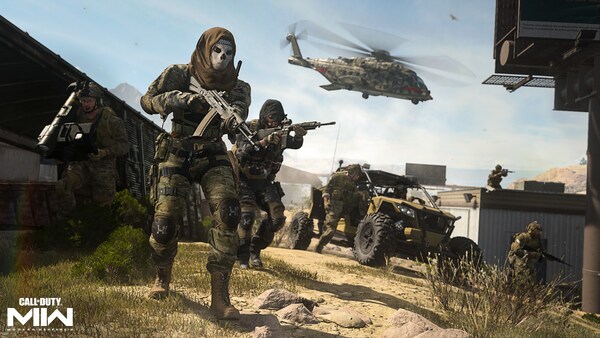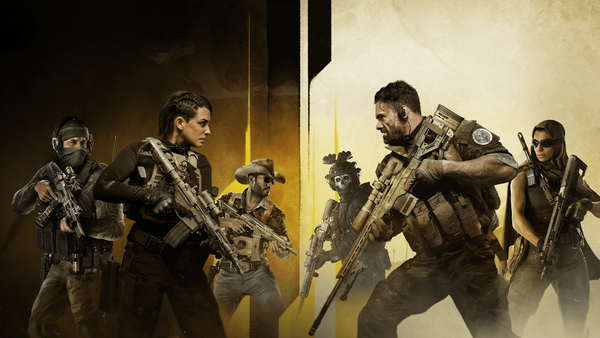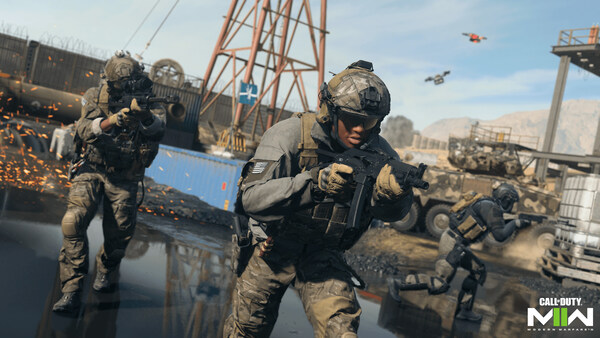Advertisement
Popular Now
Introduction
*Call of Duty: Modern Warfare II* is known for its high-paced multiplayer action, tactical gameplay, and intricate weapon balancing systems. However, as with any first-person shooter, the balance of weapons can make or break the gameplay experience. One of the biggest issues in *Modern Warfare II* has been the introduction of overpowered weapons, which have disrupted the competitive scene and casual play alike. In this article, we will delve deep into how overpowered weapons affect gameplay, how developers have responded, and what it means for the future of the game.




The Concept of Weapon Balancing in Multiplayer Games
Weapon balancing is crucial in multiplayer first-person shooters like *Call of Duty*. This balance ensures that no single weapon is so powerful that it dominates the entire meta, making the game less enjoyable for a majority of players. Ideally, a balanced game allows for multiple strategies and loadouts to be viable. When weapon balancing is done right, players can choose a variety of weapons that suit their playstyle without feeling pressured to pick a single gun because it's the only one that works. A well-balanced game encourages innovation in strategies and gives every weapon a unique role on the battlefield.Why Balance is Challenging
The difficulty of weapon balancing comes from the diverse range of players who use different tactics. Developers must account for professional players who exploit every advantage and casual gamers who may use more intuitive approaches.Introduction of Overpowered Weapons in *Modern Warfare II*
Since the launch of *Modern Warfare II*, several weapons have been labeled as overpowered (OP), significantly affecting the overall balance. The most notable example is the Fennec 45, an SMG that became notorious for its incredibly high fire rate and low recoil, making it almost unbeatable in close-range combat. This weapon outperformed nearly every other option in its class, making it the default choice for many players. Consequently, it disrupted the diversity of gameplay, limiting how players could interact with the environment and one another.Meta Dominance
When an OP weapon dominates the meta, the competitive scene suffers. Players feel compelled to use the same weapon, reducing the variety of engagements and tactical decisions. This creates a stale environment where every match feels repetitive.Community Reaction to Overpowered Weapons
The community reaction to OP weapons in *Modern Warfare II* was swift and vocal. Many players expressed frustration, stating that overpowered weapons were ruining the skill gap, making it harder for skilled players to distinguish themselves from less experienced players. Forums, social media, and even professional players raised concerns about the Fennec 45 and other OP weapons. Complaints ranged from the lack of counterplay options to how these weapons created an imbalance in ranked play.Feedback in the Competitive Scene
Professional *Call of Duty* players, particularly those involved in tournaments, pushed for immediate weapon balancing changes. Competitive integrity is crucial for esports, and the dominance of certain weapons can make matches less entertaining and strategic.Developer Response and Patches
In response to community feedback, Infinity Ward, the developers of *Modern Warfare II*, have issued several patches aimed at balancing weapons. The Fennec 45 was one of the first weapons to receive a nerf, with reduced fire rate and increased recoil, making it less effective in close-quarters combat. These patches were aimed at restoring balance in the game, but they were met with mixed reactions. While some players appreciated the adjustments, others felt the nerfs were too severe or did not address the real issue at hand.The Balance Between Buffs and Nerfs
Balancing a game through patches is a double-edged sword. While nerfing OP weapons is essential, over-nerfing them can make them unusable, frustrating players who invested time in mastering those weapons. Striking the right balance is key to maintaining player satisfaction.Unintended Consequences of Weapon Nerfs
While nerfing overpowered weapons is necessary, these changes can have unintended side effects on the game's ecosystem. When the Fennec 45 was nerfed, players quickly found alternative weapons, like the Kastov-74U, which became the new meta-dominant gun. This pattern of shifting metas is common in online shooters, where one nerf can lead to another weapon rising to the top, creating a constant cycle of adjustments. This leads to a feeling of instability in the game, where players never know which weapons will be viable from one patch to the next.Shifting Meta and Adaptation
Players are forced to continuously adapt to new weapon balances, which can be frustrating for those who prefer a stable game environment. While some enjoy the evolving meta, others feel fatigued by constant changes.The Role of Skill in Weapon Effectiveness
Another layer to the discussion of overpowered weapons is the role of player skill. Even with an OP weapon, a player still needs to have a certain level of skill to use it effectively. However, when a weapon’s inherent stats give too much of an advantage, it can diminish the value of skill in gunfights. Players with less skill can outgun more experienced players simply by using an overpowered weapon, reducing the competitive nature of the game. This can lead to frustration among veteran players who feel that their hard-earned skills are being undermined by poor balancing.
Impact on Casual and Ranked Play
Overpowered weapons can skew both casual and ranked gameplay. In casual play, it can make matches feel unfair and lead to higher abandonment rates. In ranked play, it distorts the competitive ladder, where true skill should be the defining factor in success.Long-Term Effects of Poor Weapon Balancing
If weapon balancing issues persist, they can have long-term consequences on the health of a game. In *Modern Warfare II*, if players consistently feel that the game is unbalanced, they may stop playing altogether or turn to alternative games. The perception of fairness is essential for retaining a player base. Overpowered weapons create the sense that the game is broken, leading to dissatisfaction and frustration among the community.Loss of Player Base
Players may lose interest in a game where they feel skill is no longer the deciding factor in success. As a result, player populations may dwindle, especially in competitive modes.Solutions for Sustainable Weapon Balancing
For *Modern Warfare II* to maintain its player base, developers must find long-term solutions to weapon balancing. This involves more than just frequent patches. It requires an ongoing dialogue with the community and transparent communication about the changes being made. Additionally, the use of data-driven balancing, where player statistics are analyzed to determine the effectiveness of weapons, can help prevent OP weapons from emerging in the first place.Community Involvement in Balance Testing
One potential solution is involving the community in balance testing. By opening up test servers or gathering feedback from a wide range of players, developers can more effectively balance weapons before they become problematic in the live game.

















